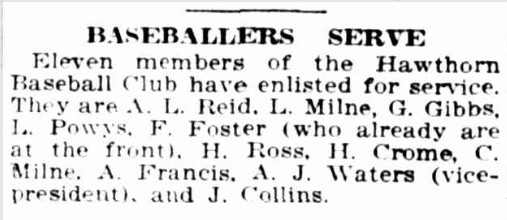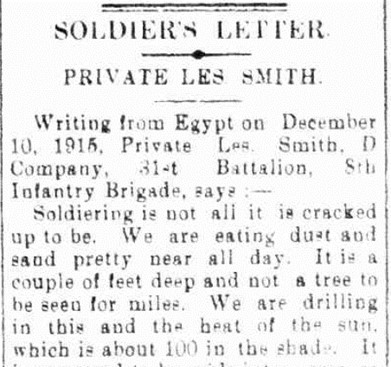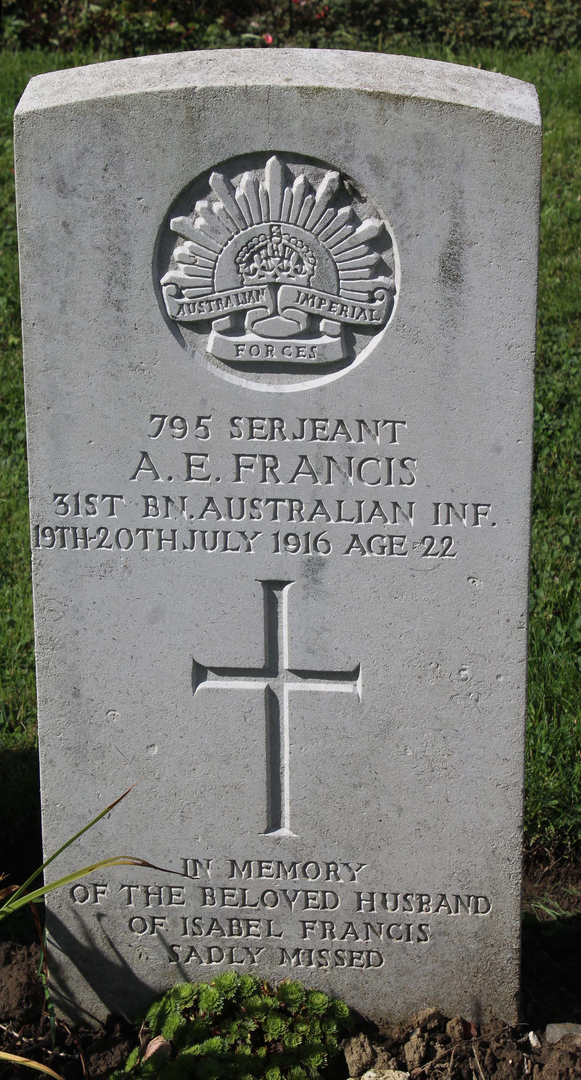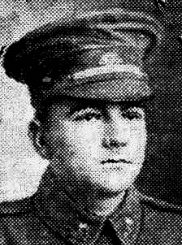
Arthur Ernest Dowie FRANCIS
Eyes grey, Hair dark brown, Complexion ruddy
Sergeant Arthur Ernest FRANCIS – Hawthorn’s Fallen Baseballer
Early Life
Arthur Ernest Dowie Francis was born in 1893 in Victoria, Australia, the youngest of John Frederick Dowie Francis (1860–1932) and Frances Belinda Minchinton’s (1863–1949) six children. His siblings were - Henry Walter (1883–1964), Victor (1885–1980), Herbert (1887–1891), Linda Olive (1888–1945) and May Eveline (1891-1948).
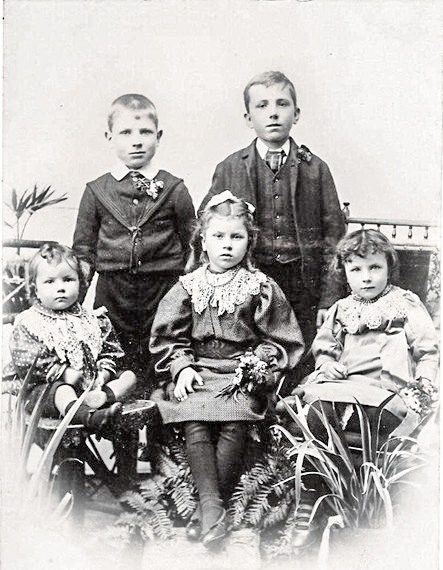
Standing: Victor and Henry
Sitting: Arthur, Linda, and May
John Francis was born in Launceston, Tasmania, and Frances in Maldon, Victoria. John was working as a foreman, The family lived in Brunswick and later in a substantial house in North Fitzroy, Melbourne.
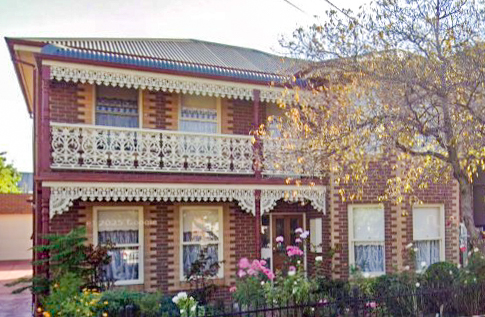
Arthur attended King Street State School in West Melbourne. He was remembered as sturdy and cheerful. After his schooling, he became a wood machinist. Sport played a big part in Arthur’s youth. He and eldest brother Henry were active members of the Hawthorn Baseball Club. In 1912, both brothers helped secure the C Grade Pennant and two years later, the brothers were part of the B Grade Premiership side, with Henry as captain and Arthur as one of the team’s key players.
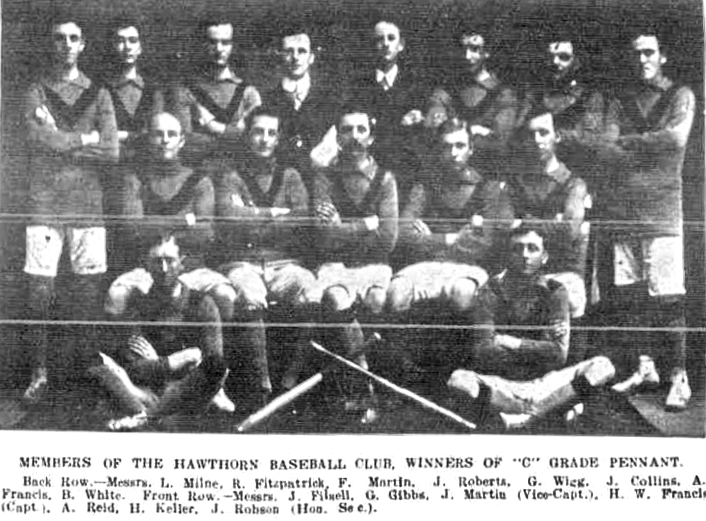
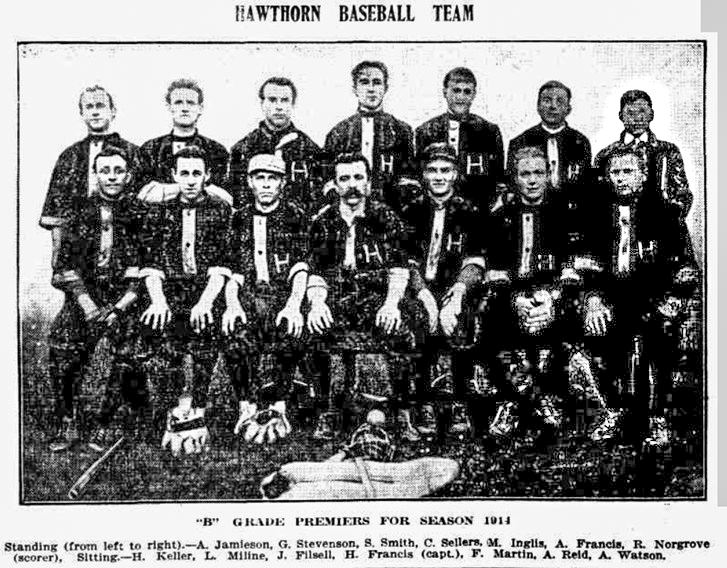
Arthur married Isabel Frances Diverall in 1914, the daughter of James Kato Diverall and Maria Jane Curwood. They set up home at 45 Miller Street, North Fitzroy and their only child, Ernest Arthur Francis, was born in 1915. Their time as a family was heartbreakingly brief. Arthur left Australia in November and Ernest died, on 16 May 1916, aged just 12 months. Isabel, who was a nurse, continued to live at the family home until 1928 when she married William Cameron, a WW1 veteran and a professional soldier with 1st Division.
Off to War
Arthur enlisted in Melbourne on 6 July 1915 and was assigned to the newly formed 31st Battalilon, D Company. With three years of cadet training and demonstrating leadership capabilities, but still just 21 years old, he was appointed Sergeant on 15 September. Just days after Arthur enlisted, the Herald listed him among eleven members of the Hawthorn Baseball Club who had signed up together.
The 31st Battalion was formed with two companies from Queensland and two companies from Victoria. The Victorian enlistees trained at the camp at Flemington Depot and then at Broadmeadows. All were joined in early October at Broadmeadows in Victoria. Before sailing from Melbourne on 9 November aboard the troopship Wandilla, the 991 soldiers of the 31st had been on parade in Melbourne in front of a good crowd. The Minister for Defence, H.F. Pearce said:
“I do not think I have ever seen a finer body of men.”
The Wandilla docked at Port Suez exactly four weeks after leaving Melbourne. They were first sent to Serapeum to continue their training and to guard the Suez Canal from any potential threats posed by the Ottoman Army. Near the end of February, they moved to the large camp at Tel-el-Kebir , which was about 110 km northeast of Cairo. The 40,000 men in the camp were comprised of Gallipoli veterans and the thousands of reinforcements arriving regularly from Australia. The 60 km trip must have been unpleasant, as it was reported that they were moved in “dirty horse trucks.”
Source: AWM4 23/48/7, 31st Battalion War Diaries, Feb 1916, page 5
The next move was at the end of March, back to the Suez Canal at the Ferry Post and Duntroon Camps and then finally to Moascar at the end of May. The months passed in training and sightseeing, but by the time the 31st Battalion was transferred to France, the men were all heartily sick of Egypt.
Private Les Smith’s (934) letter home pretty well sums it up.
On 15 June, the 31st Battalion began to make their way to the Western Front, first by train from Moascar to Alexandria and then sailing to Marseilles. A, B and D companies were aboard the troopship Hororata. After disembarking on 23 June, they were immediately boarded onto trains to Steenbeque and then marched to their camp at Morbecque, 35 km from Fleurbaix in northern France, arriving on 26 June. The battalion strength was 1019 soldiers.
The area near Fleurbaix was known as the “Nursery Sector” – a supposedly relatively quiet area where inexperienced Allied troops could learn the harsh realities of Western Front trench warfare against the Germans. But the quiet times and the training period did not last long. Training continued, now with how to handle poisonous gas included in their regimen. They began their move towards Fromelles on 8 July and by 11 July they were into the trenches for the first time.
The Battle of Fromelles
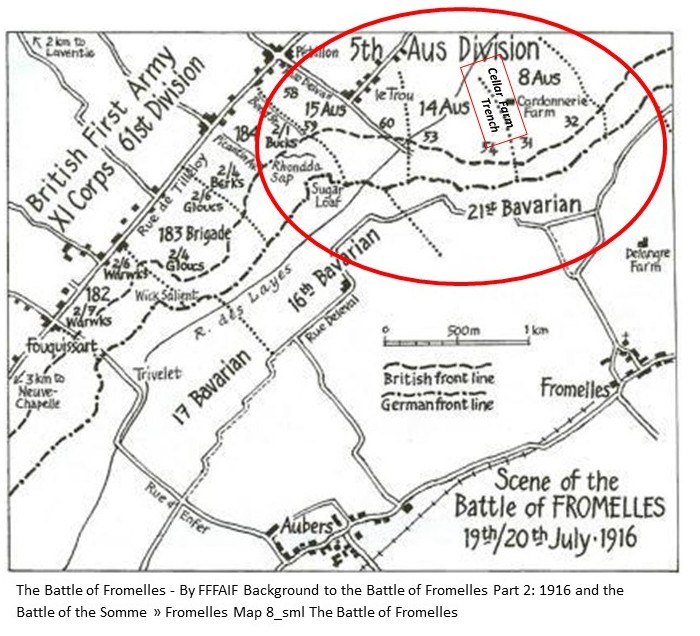
The overall plan was to use brigades from the Australian Fifth Division to conduct a diversionary assault on the German trenches at Fromelles. The main attack was planned for the 17th, but bad weather caused it to be postponed. On the 19th they were back into the trenches and in position at 4.00 PM. The Zero Hour for advancing from their front-line trenches was to be 5.45 PM, but the Germans knew this attack was coming and were well-prepared:
“Just prior to launching the attack, the enemy bombardment was hellish, and it seemed as if they knew accurately the time set.”
The assault began at 5.58 PM and they went forward in four waves, A and C Company in the first two waves and B and Arthur’s D Company in the 3rd and 4th waves. There were machine gun emplacements to their left and directly ahead at Delrangre Farm and there was heavy artillery fire in No-Man’s-Land. Based on a witness statement from Private Eric Long (911) D Company, Arthur was killed in near the front lines in the early stages of the attack.
(Note that this statement is misattributed to William John Francis, also of 31st D Company. The physical description and burial information match Arthur Francis, not William Francis.)
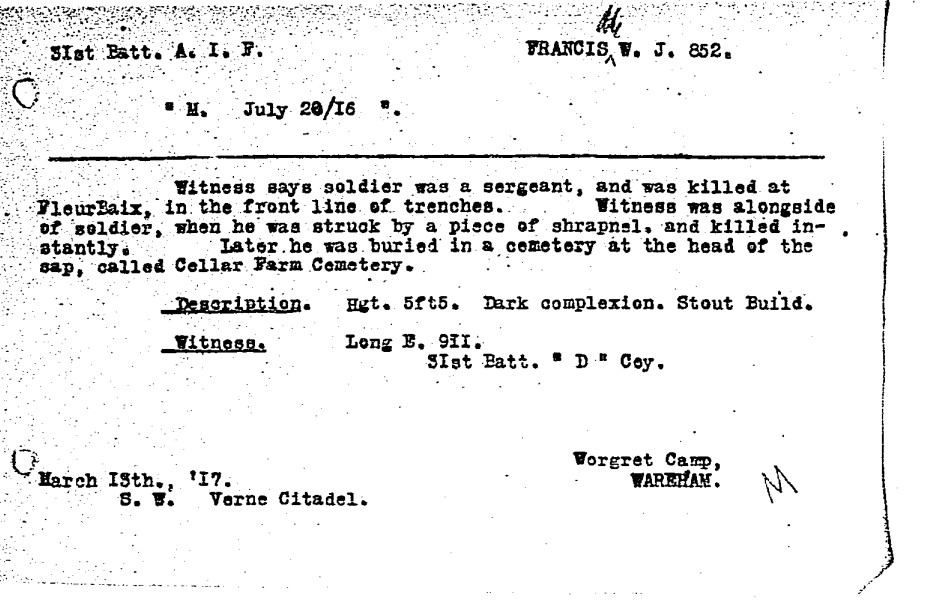
(misattributed to D Co. William Francis, a 5’8” private)
The pre battle bombardment did have a big impact and by 6.30 PM the Aussies were in control of the German’s 1st line system (Trench B in the diagram below), which was described as “practically a ditch with from 1 to 2 feet of mud and slush at the bottom.”
Source: AWM4 23/49/12, 32nd Battalion War Diaries, July 1916, page 11

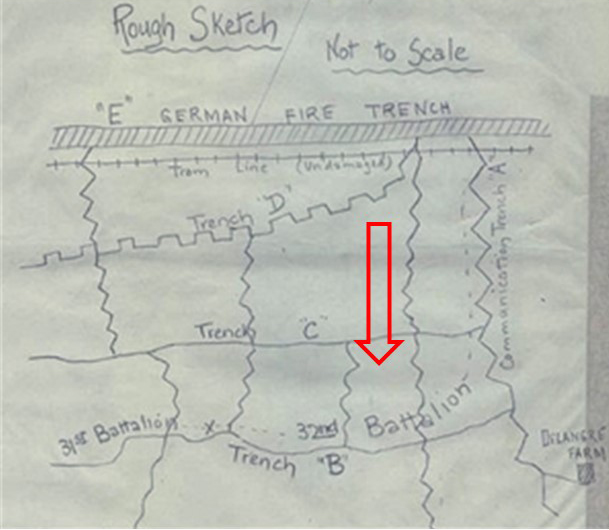
Unfortunately, with the success of their attack, ‘friendly’ artillery fire caused a large number of casualties. By 8.30 PM the Australians’ left flank had come under heavy bombardment with high explosives and shrapnel. Return bombardment support was provided and the 32nd, who also had the job of holding the flank to the left of the 31st, were told that “the trenches were to be held at all costs”.
Source: AWM4 23/49/12, 32nd Battalion War Diaries, July 1916, page 12
Fighting continued through the night. The Australians made a further charge at the main German line beyond Trench B, but they were low on grenades, there was machine-gun fire from behind from the emplacement at Delangre Farm and they were so far advanced that they were getting shelled by both sides.
At 4.00 AM the Germans began an attack from the Australian’s left flank, bombing and advancing into Trench A (map). Given the Australian advances that had been made earlier, portions of the rear Trench E had been left almost empty, which then enabled the Germans to be in a position to surround the soldiers. At 5.30 AM the Germans attacked from both flanks in force and with bombing parties. Having only a few grenades left themselves, the only resistance the 31st could offer was with rifles.
`“The enemy swarmed in and the retirement across No Mans’ Land resembled a shambles, the enemy artillery and machine guns doing deadly damage.”`
Source: AWM4 23/48/12, 31st Battalion War Diaries, July 1916, page 29
The 31st were out of the trenches by the end of the day on the 20th. From the 1019 soldiers who left Egypt, the initial impact was assessed as 77 soldiers were killed or died from wounds, 414 were wounded and 85 were missing. To get some perspective of the battle, when Charles Bean, Australia’s official war historian, attended the battlefield two and half years later, he observed a large quantity of bones, torn uniforms and Australian kit still on the battlefield.
The ultimate total was that 162 soldiers were either killed or died from wounds and of this total 82 were missing/unidentified. The bravery of the soldiers of the 31st was well recognised by their own Battalion commanders.
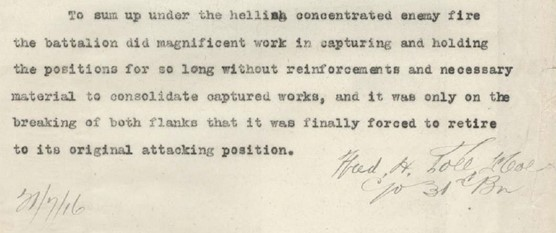
After the Battle
Arthur was killed instantly during the assault at Fromelles and was later recovered from the battlefield. He was laid to rest in Anzac Cemetery, Sailly-sur-la-Lys, France.
Arthur’s belongings were returned to Isabel and she received a photo of his headstone. He was awarded the 1914-15 Star Medal, the British War Medal, the Victory Medal, a Memorial Scroll and a Memorial Plaque.
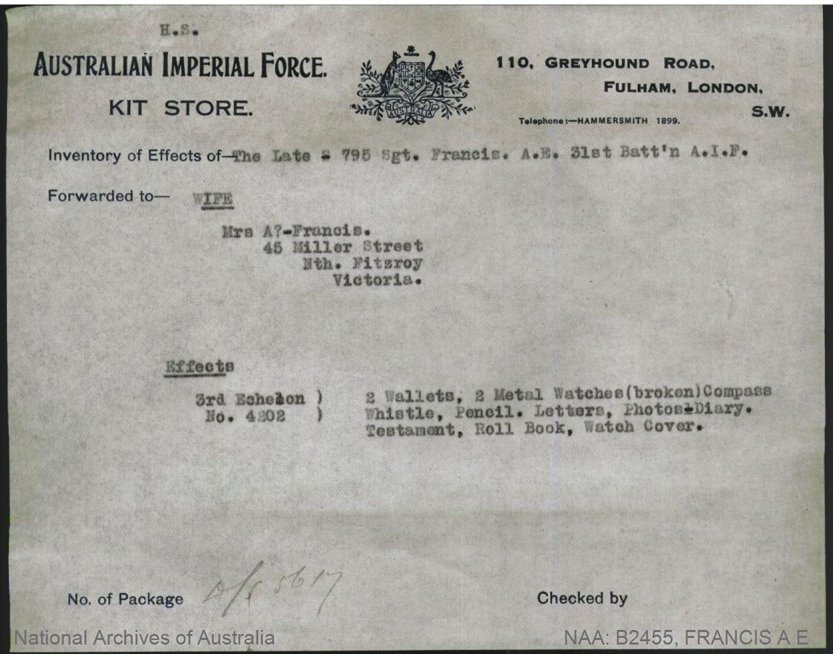
In Melbourne, the news of his death reached his sporting community. The Winner newspaper wrote:
“Sergeant A. E. Francis... was always keen on military matters, and soon after enlisting gained his stripes. After doing six months’ duty at the Suez Canal, he was amongst the first to be transferred to France. In losing his superior officer he was leading his gallant brigade when he lost his life. Prior to enlisting he captained the Hawthorn second grade baseball team. The Hawthorn team was desirous of forfeiting the game against Richmond on Saturday, but, at the request of his brother Harry, captain of the team, the game was played. Great sympathy is extended to his bereaved wife and parents.”
The Leader newspaper recalled his role at Hawthorn Baseball Club when awarding the Military Medal to his teammate Harold Ross:
“Prior to enlisting he played shortstop for the B team, and with Sergeant A. E. Francis (since killed in action) was instrumental in bringing about the success of the Hawthorn B team.”
For Isabel, who had buried their only son just two months earlier, those few returned possessions and words of respect were all that remained. Three years after the battle, Arthur’s family placed tributes in The Argus to mark the anniversary of his death:
FRANCIS. – In proud and loving memory of our soldier brother, Sergeant A. E. Francis, D Company, 31st Battalion, killed in action at Fromelles, in France, 19th July, 1916. Gone, but never forgotten.– Inserted by his sister-in-law and brother, S. V. and H. W. Francis.
FRANCIS. – In loving memory of our dear brother, Sgt. Arthur E. Francis, killed in action France, 19th July, 1916.– Inserted by his loving sister and brother-in-law, May and Eric.
For Henry, the loss must have been especially hard. He and Arthur had not only grown up together but had also played side by side for the Hawthorn Baseball Club. Arthur’s parents, John and Frances, died in 1932 and 1949 respectively. Arthur’s name is etched on the Australian War Memorial Roll of Honour in Canberra and on his headstone at Anzac Cemetery, Sailly-sur-la-Lys, standing as a quiet reminder of the young sergeant from North Fitzroy who never came home. As he was killed near the Australian lines, his body was recovered and it is believed he was buried by his comrades near the sap at Cellar Farm (see map) and later at Anzac Cemetery, Sailly-sur-la-Lys, where he lies in Plot II, Row C, Grave 2. His headstone carries the inscription chosen by his wife Isabel:
“In memory of the beloved husband of Isabel Francis. Sadly missed.”
Footnote
Based on the Arthur’s AIF records, his death was officially recorded as 21 July 1916, i.e. AFTER the battle. There are forty 31st Battalion soldiers originally recorded with this incorrect date of death. Given the chaos of the battle, the date is when the reports were filed. The 21 July date stood as the official date of his death until 2016 when an extensive review of the data was presented to the Commonwealth War Graves Commission, who have now revised the date of death for these soldiers to 19-20 July 1916. They have corrected the headstones for these soldiers, as you can see on Arthur’s.
The Fromelles Association would love to hear from you

Contacts
(Contact: carla@fromelles.info or geoffrey@fromelles.info).
(Contact: army.uwc@defence.gov.au or phone 1800 019 090).
Donations
If you are able, please contribute to the upkeep of this resource.
(Contact: bill@fromelles.info ).
